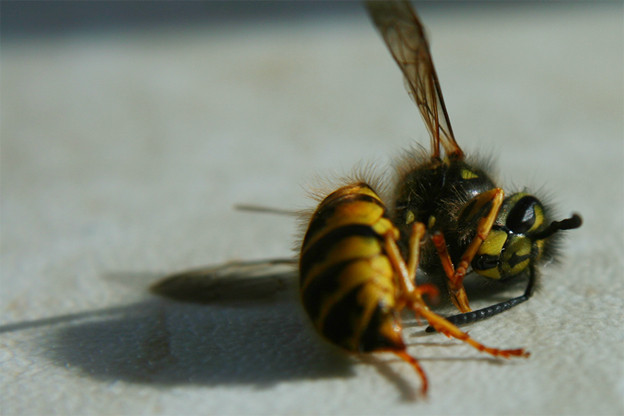
A small victory for bees
Update: Here’s a European study that demonstrates the toxicity of many pesticides to bees, as described in a U.K. Independent article.
State Representative Rick Hansen, DFL-South St. Paul, put it this way at the March 16th meeting of the Minnesota House’s Environment and Natural Resources Policy and Finance Committee:
“It can be the small wildlife, the little things, and we need to pay attention to the little things…”
He was speaking in defense of offered amendment H2611A26, which in the words of Bluestem Prairie was designed to make sure that land acquired for wildlife habitat preservation in this year’s Lessard Sams Outdoor Heritage bill not be planted or otherwise treated with a product that contains a pollinator lethal insecticide, as defined by Minnesota law.
At the meeting, state representative Paul Torkelson, R-Hanska, spoke out against the amendment by this reasoning:
“While we certainly do have an issue with pollinators, including bees, this is not an appropriate response.
There’s no scientific proof that this will benefit them in any way and these [pesticides] are very useful tools for agriculture.”
The amendment was rejected with a vote of 9 ayes, 12 nays.
However, we do have scientific proof – or, at least, two judgments – that pollinator lethal insecticide, as defined by Minnesota law do harm pollinators.
Well, there is a semantic difference between knowing a ban or restriction of something will lead to a benefit, or knowing that the use of something will lead to harm. Right?
At any rate, four days after this meeting, on March 20th, an article titled: In win for beekeepers, Minnesota links insecticide to damaged hives by Josephine Marcotty was published in the Star Tribune.
Investigators from the state Department of Agriculture confirmed, in effect, what beekeepers have been saying for years: Even when used according to law, the most widely used class of insecticides in the world are acutely toxic to honeybees under routine circumstances.
Two beekeepers in the Washington County near Scandia have been compensated for their loss of bees – a result of the farmer across the road from them planting a field in GMO (aka Roundup Ready) corn on a day when the wind blew into the beekeepers yard. The threshold amount of bee death to be eligible for compensation runs 50 dead bees for every .5 frame of bees. Both beekeepers met the threshold, at least 500 dead bees in one instance and at least 1,000 dead bees in the other. The corn seeds being planted were coated with clothianidin, one of the neonicotinoid insecticides. The beehives were sheltered from the road by a stand of trees, but the bees were free to roam. The results of testing found clothianidin present at high enough levels in the dead bees and in nearby dandelion flowers to conclude that the bees likely died through either direct exposure to or through foraging on flowers contaminated with the insecticide.
The Minnesota Legislature appropriated $150,000 per fiscal year from the pesticide regulatory account to pay compensation claims for bees killed by pesticide effective July 01, 2014. The above cases represents the first time that compensation has been awarded from this fund out of ten claims. Of those ten, three are still ongoing, one from 2014 and two from 2015.
This could be good news for beekeepers, pollinators, and all of us. In the Star Tribune article, Representative Hansen, who sponsored the 2014 law that created the compensation system had this to say:
“This is the first action of any state, a finding of fact, that neonicotinoids are harmful to bees, once you have a state compensating people for a loss, it’s real.”
Thanks for your feedback. If we like what you have to say, it may appear in a future post of reader reactions.


